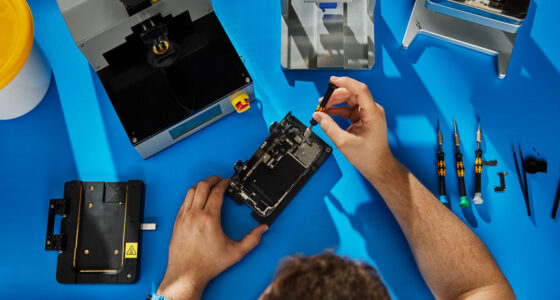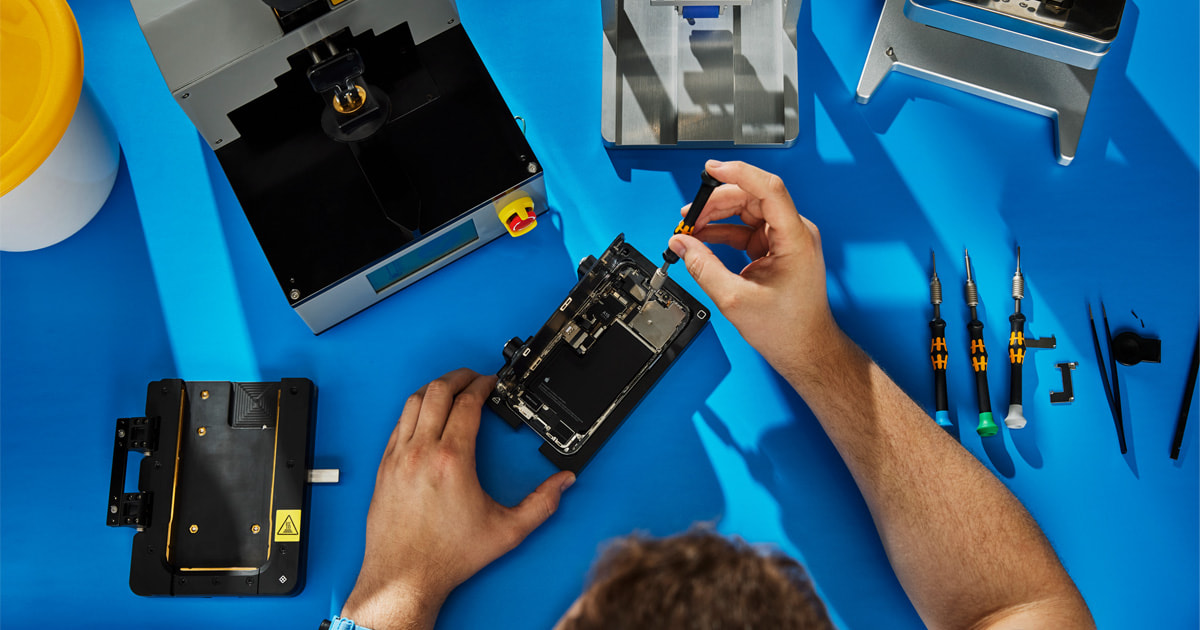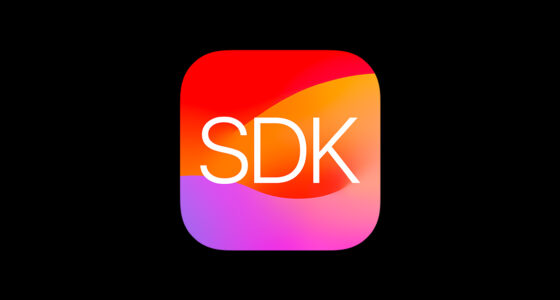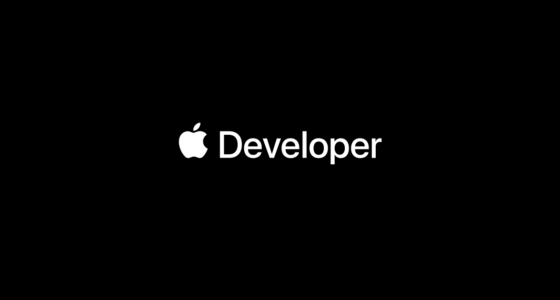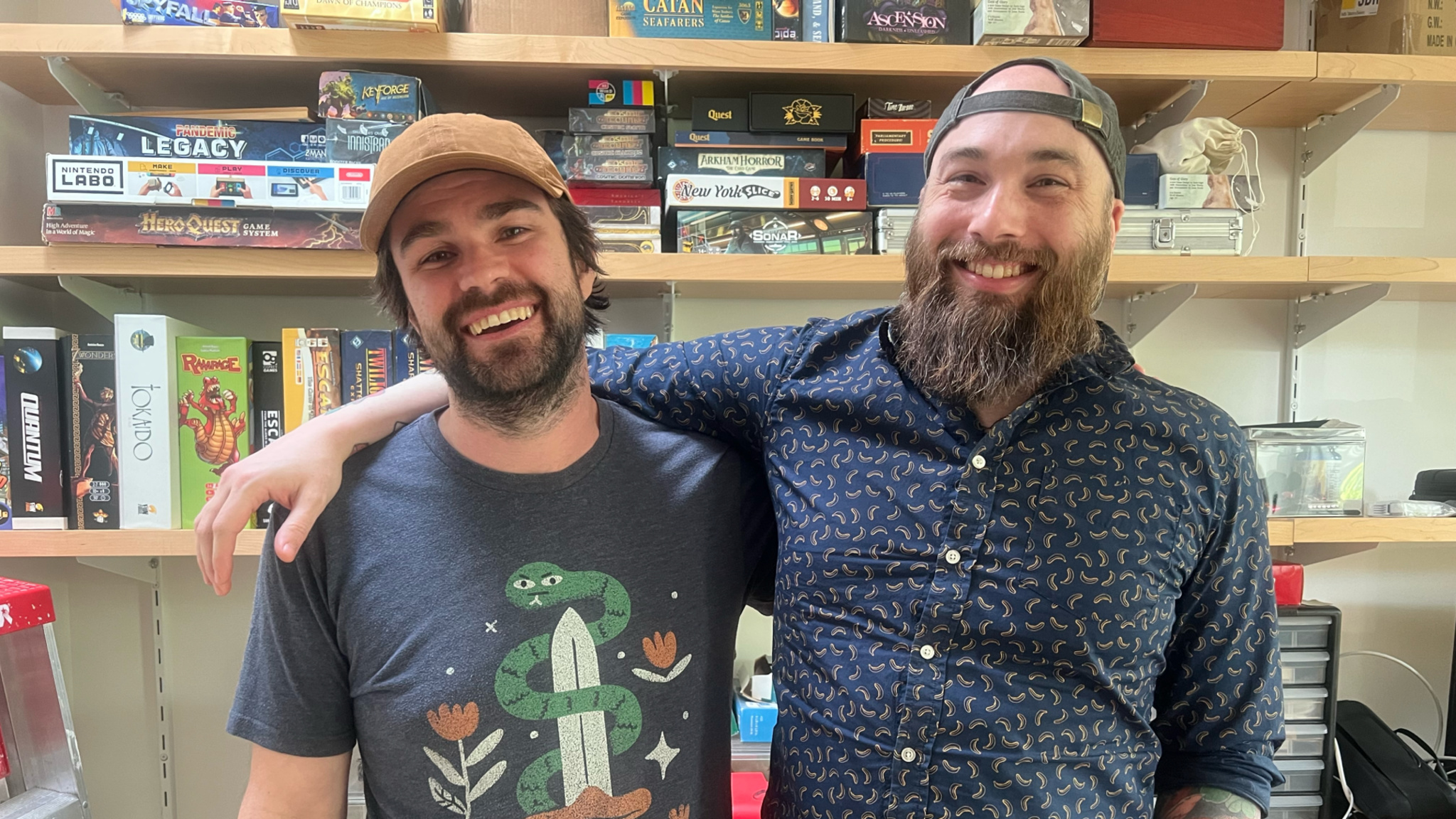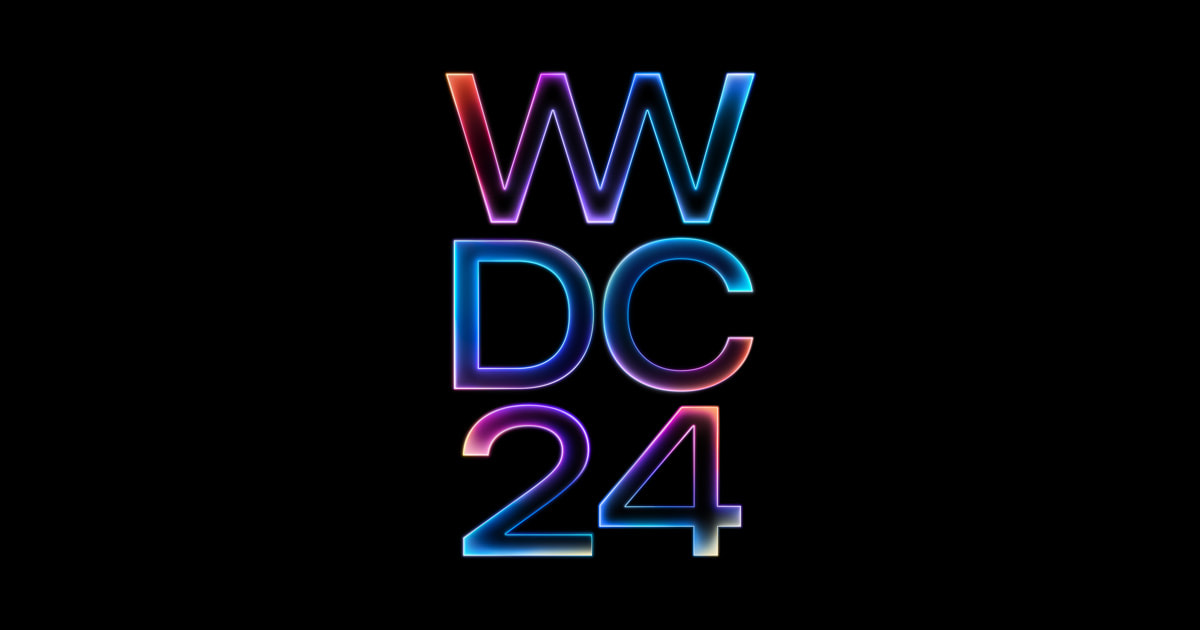April 8, 2024
FEATURE
Pushing the limit with Apple Watch Ultra and The Speed Project
Members of L.A.’s Koreatown Run Club and New York’s Old Man Run Club join forces to take on the 300-plus-mile relay from Santa Monica to Las Vegas
Driving along Ocean Avenue around 3:30 a.m. on a cool Friday morning in March, most of Santa Monica is perfectly quiet and still. But as the car approaches Colorado Avenue, a low din of voices begins to build. Every block, it grows louder and louder, until suddenly its source becomes clear, illuminated beneath the blazing neon at the entrance to the city’s iconic pier.
Hundreds of people have gathered here for the start of The Speed Project, an annual relay event that attracts brave souls from all over the world. The energy is electric: Team RVs covered with DIY signage line the street, massive flags ripple in the wind, and a drone flies overhead, casting an otherworldly glow on the undulating crowd. As the clock strikes 4 a.m., the teams scatter off in every direction.
Members of Los Angeles’s Koreatown Run Club (KRC) and New York City’s Old Man Run Club (OMRC) have been training for this day for months, joining forces from their respective coasts to take on the grueling 300-plus-mile route through the Mojave Desert to Las Vegas. There are no rules, no support stations, no spectators, no rain delays — just the runners, their navigators, their crew, and the open road. And that’s a big part of the appeal.
Through it all — the rugged landscape, the sleep deprivation, the dehydration, the extreme temperatures, and the pouring rain — Apple Watch Ultra 2 was an essential companion, offering the 12-member team the ability to instantly keep tabs on each others’ locations, take hands-free calls, keep an eye on their pace, provide visibility in the darkness, and view their elevation.
“Apple Watch Ultra 2 was our instant lifeline to each other,” says Cindy Le, the team’s veteran navigator and crew captain — a sentiment echoed by cocaptain Ja Tecson.
“The watch is truly made for the conditions we were going through, especially when we did our trail runs at night,” Tecson adds.
Made from aerospace-grade titanium, Apple Watch Ultra 2 is Apple’s most capable and rugged watch, with the best battery life of any Apple Watch, advanced running metrics, easy-to-read Workout Views, a range of training experiences, and Apple’s brightest display.
The team’s photographers — A.J. Lising, Jeremy Jude Lee, and Ja Tecson — documented their journey in a series of images shot on iPhone 15 Pro Max, and edited in Adobe Lightroom and Photoshop with an analog aesthetic, capturing the emotion of each moment.
Friday, 04:00:08 a.m.
Palisades Park, Santa Monica, California
Early Friday morning, the team’s 12 runners and eight support crew members are already running on adrenaline and very little sleep. Everyone is excited to watch teammate Annie Cun — who is here at the starting line despite a recent cancer diagnosis — kick off the very first segment. “This is a journey that we’re doing together,” says Le, reminding the runners in the huddle to stay in the moment and not just focus on their final destination. “Like in life, there’s not really a finish line. There’s only this present moment over and over and over again.”
Friday, 10:08:06 a.m.
Santa Clarita, California
As Angelo Antonio heads along Soledad Canyon Road, the clouds have finally opened up.
Friday, 12:38:30 p.m.
Palmdale, Mojave Desert
Anthony Trần takes a breather after making the handoff to teammate Paulsta Stanczuk.
Friday, 06:36:41 p.m.
Oro Grande, Mojave Desert
At sunset, Antonio runs along a single-lane dirt road in Oro Grande. For the runner, who grew up in the Mojave Desert, the moment is particularly special, representing a homecoming of sorts.
Saturday, 12:15:11 a.m.
Newberry Springs, Mojave Desert
At night, Tecson says Apple Watch Ultra 2 provided the team with an extra sense of safety: “I would always turn my flashlight setting on, because there were a lot of really aggressive drivers on the road.”
Saturday, 12:36:15 a.m.
Newberry Springs, Mojave Desert
Sleep deprivation is an inescapable part of The Speed Project experience. “A lot of people, when you get into ‘I’m hungry, I’m tired, I’m cranky,’ you can really lose who you are a little bit,” says team cocaptain Will Eckman. “You have that shared experience with everyone else, and how do you all push each other up to get through? I think everybody was certainly feeling it in the overnight moments between midnight and 7 a.m.”
Saturday, 09:10:12 a.m.
Death Valley Road, Baker
Though many of the runners from the two clubs hadn’t met in person until the night before the race, it doesn’t take long for a sense of camaraderie to build on the road. “It just felt so natural, everybody coming together and really building a friendship,” says Will Eckman. “It almost felt like we had been friends for a very long time. That was amazing to see very quickly.”
Saturday, 09:25:48 a.m.
Baker, Mojave Desert
Out on the road, the runners use Apple Watch Ultra 2 to stay in touch with the crew back in the RV. “If something comes in that I have to answer, I use voice to text to continue my run and not break stride,” says cocaptain Kim Yee, shown here during a one-mile repeat on Death Valley Road.
Saturday, 01:47:48 p.m.
Boron, Mojave Desert
By the time the team reaches the grueling 26-mile stretch known as Power Line in the late afternoon, the weather has changed, and the team is concerned about their SUV getting stuck in the mud. “We started to feel some drizzle, and then we heard the rain hitting the power lines,” says Tecson. “You could just feel this crackling sound with the wind — it sounded beautiful and scary at the same time.”
Saturday, 06:08:43 p.m.
Goodsprings, Southwest Extreme Triangle
While they’re on their feet completing their segments, Apple Watch Ultra 2 offers the team’s athletes the ability to multitask. “As a runner, there’s so much going on,” says Tecson, pictured here waiting for teammate Cun. “You’re also concerned about everyone else, but you can also see through the watch that it got executed and checked off the list.”
Saturday, 06:23:10 p.m.
Jean, Southwest Extreme Triangle
Silhouetted against the backdrop of the desert mountains along State Route 161 — still capped in snow after a brief storm hours earlier — Jenny Peng finishes another segment. As the team delves deeper into the Mojave Desert, they rely on the precision dual-frequency GPS of Apple Watch Ultra 2, which provides precise distance, pace, and route data. “Having GPS dial in quickly so you can just tag and go was really critical,” says Will Eckman.
Saturday, 07:05:16 p.m.
Jean, Southwest Extreme Triangle
As night falls along the California-Nevada border, fatigue starts to set in for all of the runners, including Peng.
Saturday, 07:26:07 p.m.
Sloan, Southwest Extreme Triangle
With Las Vegas and its bright lights slowly coming into sight, Will Eckman stretches and prepares to embark on his final one-mile segment.
Saturday, 09:53:40 p.m.
Las Vegas, Southwest Extreme Triangle
On Saturday evening, the KRC x OMRC team crosses the Speed Project finish line in Las Vegas, with a final time of 41 hours and 51 minutes — cue the celebratory champagne shower, a well-deserved real shower, a hot meal, and a comfy hotel bed. “I love doing this race because you get to see what the human spirit is capable of,” says Le. “You see people go through their lows and really struggle to get out of their rock bottom in that moment to show up for each other and show up for themselves, and do something a previous version of themselves would have never thought was possible.”
Press Contacts
Nikki Rothberg
Apple
nrothberg@apple.com
Apple Media Helpline
media.help@apple.com




